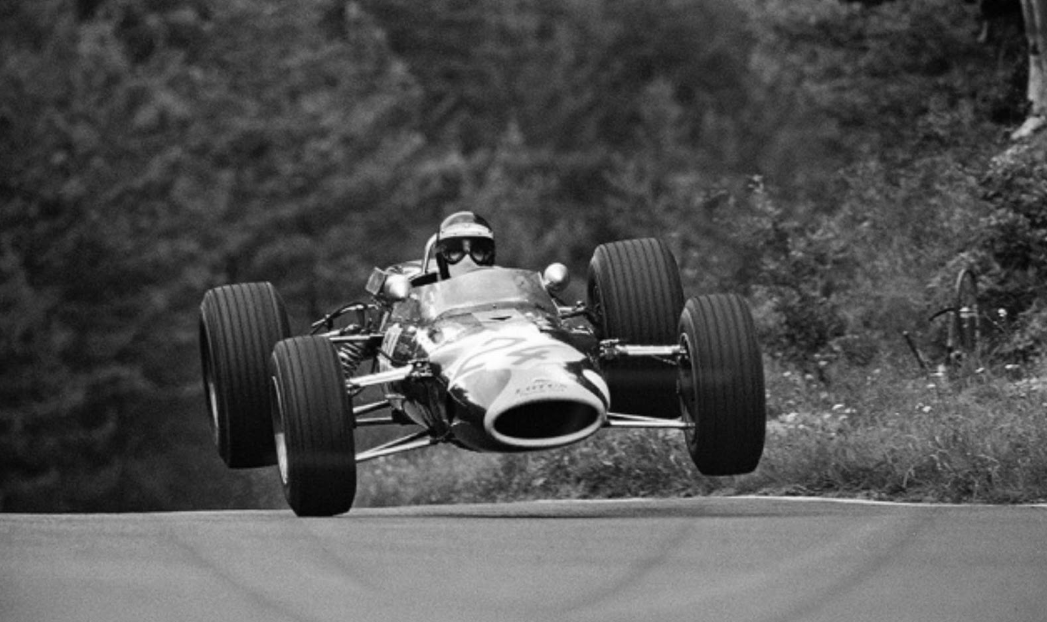Chasing Speed, Mastering Life: The Untold Lessons of Formula 1

For a long time, I had the perception that Formula 1 race is about a super driver who never blinks and a fabulous car that never breaks
A race stuffed with high-end brands’ advertisements watched by rich spectators and the risk of crashing in these races is somehow high
However, after watching the docuseries “Drive to Survive” on Netflix, I changed my mind about that individualistic look on that industry, it turned out to be a complex form of team dynamics where lessons on collaboration, Analytical decision making, competition and financial management exceeds the entertainment behind the thrill of speed
I have compiled these lessons that clicked with me into 5 topics
The Joy of Analytics
The Crash
The Army behind one man
The Fire within
The Profits dilemma
And here is my narrative about Formula 1 👇
The Joy of Analytics
The F1 Grand Prix race is about 305 Km long (Except for the classical Monaco 260 Km) along multiple laps that ranges from 4 to 7 Km and the race to be finished in 2 hours maximum, where they drive at 360 Km/hr at straights and of course lower at turns and corners
In Austria Grand Prix Lap 71 (The final lap) Hamilton (Mercedes) was ahead of Norris (McLaren) by 5.6 seconds… then a minor accident took place where a yellow flag was raised, however Hamilton didn’t slow down and as a consequence he received a penalty of 5 seconds...
So practically the difference is 0.6 seconds in Hamilton’s favor and the remaining distance is 4.3 Km
In no time The Analytics team of McLaren along with communication team informed Norris about the Hamilton’s penalty and made the calculation for him; in order to make it to the podium, you have to be 21 Km/hr. faster than Hamilton in the next 4.3 Km and take the 6,7 rounds at specific higher speed along with tips on squeezing the McLaren’s engine…
Norris then was able to finish 4.8 seconds behind Hamilton, achieving the fastest lap in the race and made it to the podium third replacing Hamilton by 0.2 seconds (After adding the penalty time) …
In this technological Age where differences between engines are small - at least for me when comparing Ferrari to McLaren to Mercedes- knowledge, data analytics and speedy communication can play a pivotal role to guide successful decisions
That’s the joy of Analytics
The Crash
Ayrton Senna died in a crash
Schumacher broke his leg in a crash
Romain Grosjean was partially burnt in a crash
And before the development of safety measures in the last decades, there were definite 7 to 8 deaths at every race
So, Face it…
you are going to crash…
Experts crash and Novice’s crash….
Not every move is perfect
Not every measurement is accurate
Not all the surroundings you are aware of….
even if the plan looked so…and there's always a consequence for that.
Anything might happen within a second, unconsciously…and it takes a lot of maturity to realize so and accept it
When you hear the sound of that crash you have to keep your eyes and mind open…
To steer out of it… and to reduce the impact and damage…and only then you can realize what really happened…
Failure is either to disappoint you or motivate you to win the next race
That what happens in Formula 1
And what happens in Life too…
Failing is genuinely human…
And moving on is a trait that mindful people own.
The Army behind one man
In every race there are 20 drivers who belong to 10 teams
Since its launch, Drivers names overshadowed Manufacturer and team names in F1 …
from Fangio (The Godfather of this Industry) to Ayrton Senna, to Michael Schumacher, to Sebastian Vettel to Lewis Hamilton to Max Verstappen
Very Large names whom regarded as champions and as well celebrities
however, it is really interesting to know that behind every name there is an army that may reach to 1000 persons working to support this driver including those at the manufacturing site and those who go to the circuit to have field support (50-75 people)
The Race engineer plays a pivotal role to communicate with the driver throughout the race utilizing data from Analysts (Inside each car there is 1.25 Km of wires, 200 sensors providing 1000 readings per second)
Mechanics supports the pit stops
Media team, security, technicians…
Design team, technical directors, logistics handlers…
Commercial directors to contract sponsors
Marketing managers to maintain the brand image and identity
Research and development to enhance Aerodynamics and Motor functionality…
The team Principal who leads the scene on ground
It is a real complex example of how a team can work in harmony and speed to achieve success
The Fire within
It was really surprising to know that drivers compete within their team more than they do with other teams and it is painful for them to be second to a teammate on the podium rather than for a rival
In Mercedes there is huge envy between Bottas and Hamilton while both of them are ranking 1 and 3 on the annual world championship ranking
Although the idea looks irritating, but specifically in this case I think it is one of the reasons why Mercedes is dominating the manufacturer champion award in the last 7 years
Competing with high profile drivers - while driving the same engine and having same training- pushes for higher limits and there are no excuses
While some maturity is needed to avoid team-devastating crashes, there is room for inner controlled fire as well and that what pushes the team for the best
The profits dilemma
Unlike many businesses, profits realized by a formula team is not an absolute measurement of success
A team might achieve profits without winning any race and may be even not on the top 10
Simply because costs spent are less than revenues gained
HAAS team in 2016 achieved $4 M while coming 8/10 in team standings , they spent $96 M and gained $100
Mercedes achieved negative profits $ -4M while coming first after spending $ 273 M
The direct revenues -from the Formula 1 association-gained by a team might reach to $60 M (as in case of Mercedes) however the cost of running a team won’t be less than $120 M and may reach $400 M
The indirect revenues come from the sponsorships that should be managed professionally to grant extra revenues
Although this team owners pushes more money to win and get higher ranking in the competition as victory would push more sponsors to pay and be part of the success story
Sponsorship comprises 30% of the revenues to a formula 1 team, Marketing from exposure on TV is another source and prizes from the association is the third source
The post COVID era has made financial management more difficult amid spend cuts and less spectators on field
It is obvious now how complicated is the financial management of F1 tram and it needs professional Controllers to run it
Formula 1 is the pinnacle of Motorsport
It is about speed, persistence and competition but as well it inspires a lot of life lessons…beyond entertainment

After watching 5 seasons of “Drive to Survive “and every single race in the last two championships, I became a big fan of Formula and its inspirational lessons, which I frequently quote in writing, reflecting and presenting
Here are my top 5 learnings:
knowledge, data analytics and speedy communication can play a pivotal role to guide successful decisions, Analytics team analyze 3TB for data in one race which can alter the race course in a fraction of second
Everyone is subject to failure
Failing is genuinely human…
And moving on is a trait that mindful people own.
Team Work, we see one driver on the screen while another 50 are running the race in the background
Internal competition and frictions between team members are always healthy for the team
Financial management is a key driver to success, not necessarily to be the first to achieve the highest profits!
It is full of lessons beyond entertainment!
Sherif.
